6 Reasons Why Your Oil Pressure Light Comes On When Idling
The oil pressure light comes on when idling signals an oil system issue. It is a crucial warning that you should not ignore. To solve the issue, you must know the particular reasons behind it.
So, why does the oil light come on when idling? It can happen due to several reasons, such as:
- A low oil level
- A malfunctioning switch or issues with the oil pressure sensor
- Worn-out rod bearings
- Failing oil pump
- Wrong oil grade
- Due to a clogged oil filter.
This article will help you identify the causes of the issue and describe how you can fix the problems. Read on to fix the issues efficiently.
Causes for Oil Pressure Light Coming on When Idling
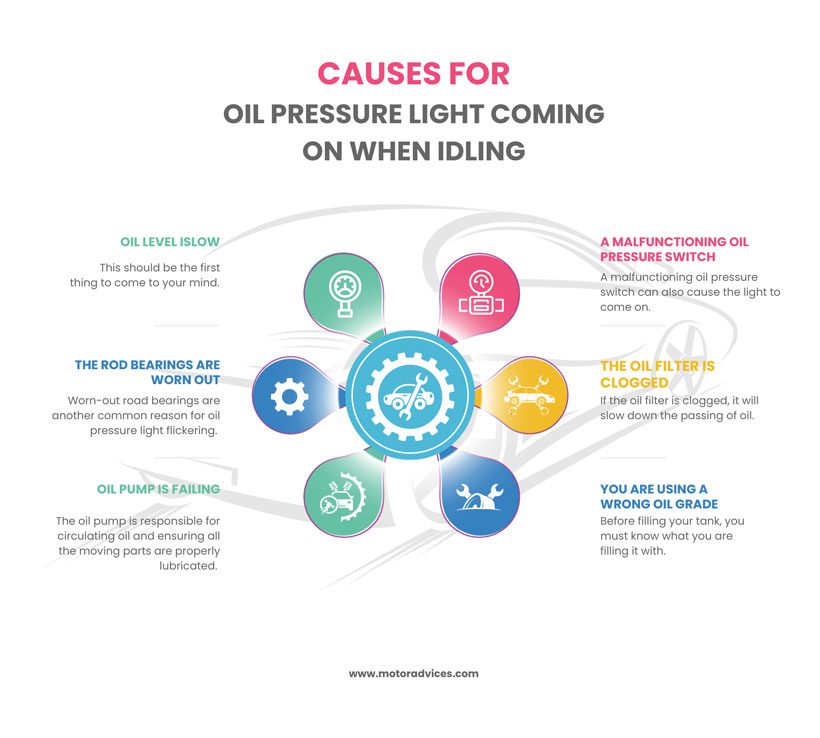
Identifying the causes for the oil pressure light coming is important to solve the issue. Here are the common issues of the problem:
Oil Level Is Low
This should be the first thing to come to your mind. The oil pressure light is designed to warn you when there is a fall in the pressure of the oil. It usually happens due to low levels of oil. Therefore, when you notice the light coming on, you have to check the oil level first.
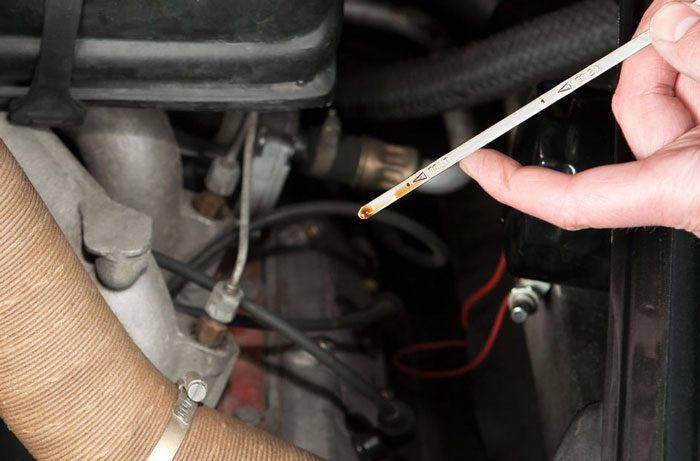
Diagnosis and Solution
Checking the oil level with a dipstick is a simple process. Check the following video to get visual instructions:
If the dipstick shows the oil level is below the recommended level, then refilling your oil tank will solve the problem for you. You must fill your tank with the recommended oil grade and proper viscosity. Otherwise, the problem can still remain.
A Malfunctioning Oil Pressure Switch
A malfunctioning oil pressure switch can also cause the light to come on. The switch is responsible for monitoring the engine’s oil pressure and signals the dashboard warning light if the pressure drops. The switch plays a vital role in your safety.
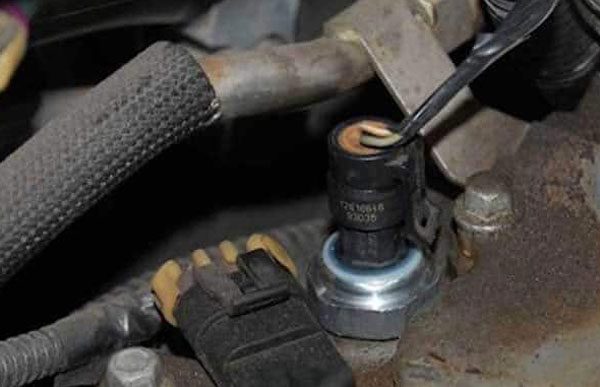
Diagnosis and Solution
If the switch is damaged over time, this can send wrong signals. And you will see a false warning signal of low oil pressure. Continuous blinking of the oil pressure light is a common hint of the oil pressure switch problem.
If the problem is with the oil pressure switch, you have to replace it with a new one. Here is how you can do it:
- Wear safety glasses to protect your eyes, and raise your vehicle with a jack and jack stand for added safety.
- Locate the switch in your vehicle. It can be by the oil filter or on the engine block. In some cars, it can also be near the oil pan. Check the owner’s manual for guidance.
- Remove the sensor from the wire that connects it to the battery. Now, use a wrench to remove the sensor.
- Instill the new oil pressure switch. However, you must ensure that the new one and the previous switch are of the same design.
The Rod Bearings Are Worn Out
Worn-out road bearings are another common reason for oil pressure light flickering. This part of the vehicle ensures a smooth movement of the pistons. You should hope this is not the problem with your vehicle, as rod bearings are expensive to replace.
There are small oil channels in rod bearings that can get dilated or worn out over time. If it happens, the oil escapes much faster, and the pressure of the oil decreases.
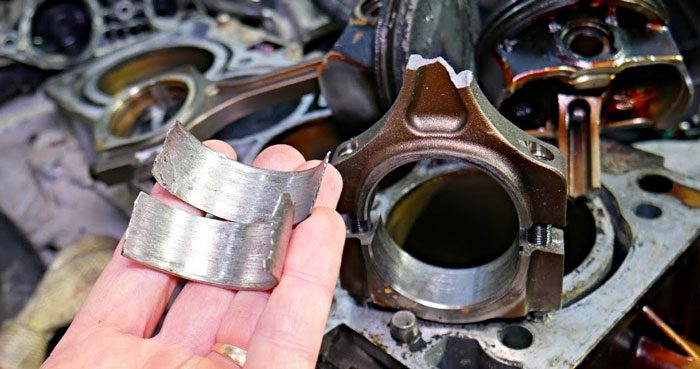
Diagnosis and Solution
Pay attention to hearing loud knocking noises from the engine, which is the primary sign of worn-out bearings. Additional symptoms include silver shavings or copper sheen in the oil, along with transmission noise.
You need to replace the rod bearings if you find them worn out.
- You will have to remove the oil pan and other components that are blocking access to the rod bearings.
- Then, loosen the bolts and rod caps to examine old bearings for wear.
- If the bearings are worn out, install the new ones.
- You should also check on the crankshaft. If the crankshaft is damaged, you will need to take it to the mechanic.
The Oil Filter Is Clogged
If the oil filter is clogged, it will slow down the passing of oil. As a result, the engine will not get enough oil, and the pressure will be low. This will lead to the ignition of the oil pressure light.
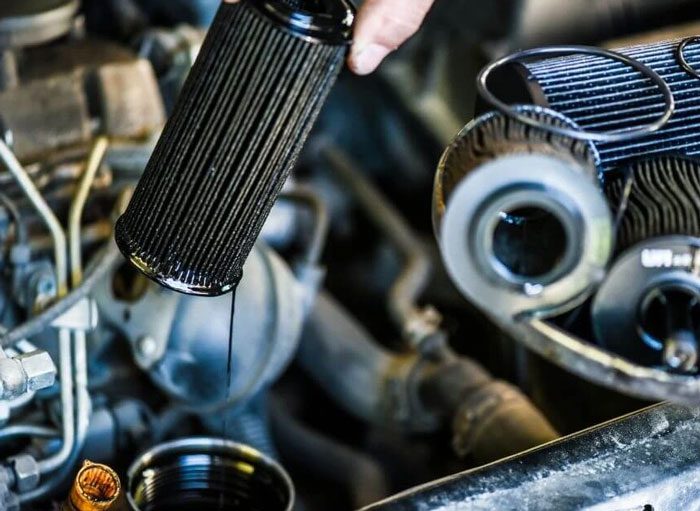
Diagnosis and Solution
Along with the oil pressure light coming on, there are other signs that hint at a clogged oil filter. The signs include sputtering, crackling or knocking sound in the engine, dark exhaust fumes, and overheating.
You have to replace the clogged filter. Repairing is not a safe and long-lasting solution. You can replace the filter by following these instructions:
- The location of the oil filter can vary. So, take help from the user’s manual to find it.
- You may have to drain some oil, so place the oil drain pan under the filter.
- Unscrew the filter with a wrench.
- Lubricating the rubber gasket of your new filter will create a proper seal.
- Place the new filter by your hand, and then screw it tightly. However, you should avoid over-tightening.
Oil Pump Is Failing
The oil pump is responsible for circulating oil and ensuring all the moving parts are properly lubricated. In case the oil pump is not working properly, there will be a reduction in oil flow. This will cause low oil pressure, and your signal light will be on.
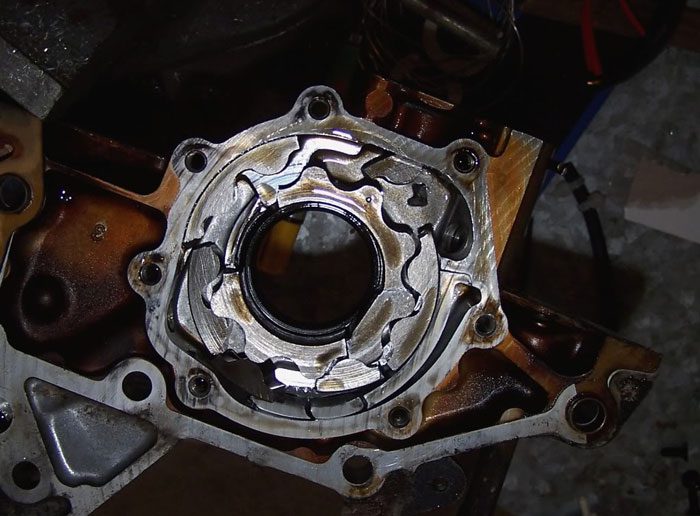
Diagnosis and Solution
Pay attention to hearing loud noises, and check if the motor temperature is high. These are common signs of a bad oil pump.
You must eliminate all other possibilities before working on the oil pump. If the problem is true with the pump, then uninstall it from the car and clean it properly.
Inspect and change the seal if needed. If there are more complex problems, you might have to replace the pump. This can be a costly replacement and should be handled by professionals.
You Are Using A Wrong Oil Grade
Before filling your tank, you must know what you are filling it with. Different vehicles have a demand for different oil grades. If you use the wrong oil grade, it can hamper the performance of the engine. Using thicker oil than recommended can reduce the oil flow, and the oil pressure will be hampered.
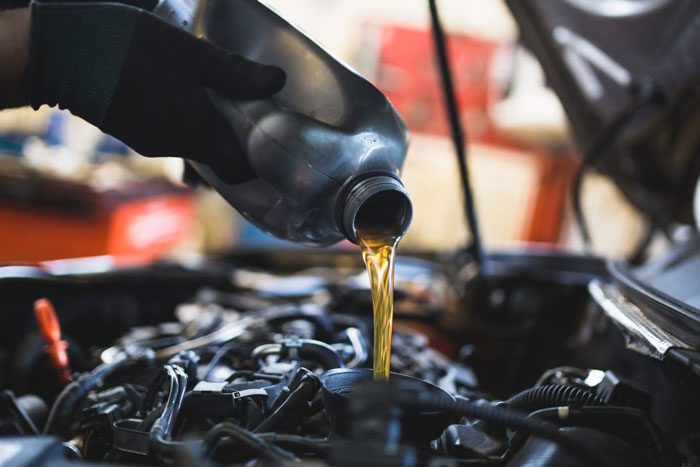
Solution
If you have been using the wrong oil in your car, it’s high time you changed it. Use the recommended grade and viscosity. Thinner oil will fail to produce the expected pressure, while thicker oil can also affect the flow of oil. So, either option should be avoided.
How to Prevent Oil Pressure Light Switching on?
The fact that the oil pressure light is switching is not the major problem. The major issue is the reason behind it. The light simply warns you to solve the issue. Therefore, you should take some steps so that your safety is not at risk.
- Keep track of oil refilling and your mileage. Forming the habit of checking on the oil level will help greatly.
- Make sure to use the right and recommended oil grade. Remember that the oil pressure greatly depends on oil viscosity.
- Check regularly for oil leaks. If you notice any sort of leaking, take immediate steps to solve it.
- Keep your engine’s oil passage blockage-free. Clean the components regularly to ensure proper flow of oil.
- Oil pressure sensors or switches need to be changed after a certain period of time. Replace them as per the recommendation of the manufacturer or of your mechanic.
- Ensure that the idle RPM of your vehicle is set correctly. The oil pressure can decrease if the RPM is set low. For smaller engines, 700 to 900 RPM is considered ideal.
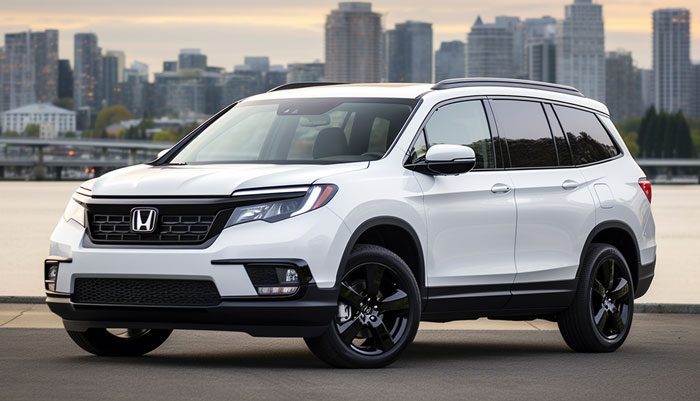
FAQ
The oil pressure is a crucial factor for the safety of your engine. You must have a clear idea regarding it and its issues. Check the following FAQs; they might be useful to you.
The ideal pressure can vary depending on your vehicle model, engine, and oil viscosity. However, 25 to 30 psi is commonly considered an ideal oil pressure when the vehicle is idle.
If you notice the oil pressure light is on, you must not continue driving. It is not safe, no matter what the reason is. You should stop the car as soon as possible at a safe place.
Conclusion
You must not take it lightly if the oil pressure light comes on. There can be different reasons behind it. Some of the problems can have simple solutions, while some will need an expert’s hand to deal with them.
Look for the issues mentioned above, find out what is causing them, and take steps accordingly. Take preventive action so that you can avoid the hassle and enjoy a smooth driving experience.

